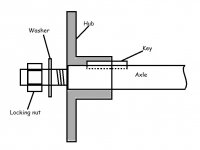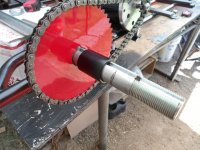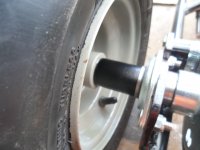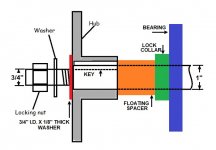Bamboo24
New member
Rookie here. But bought a 1" axle with a 3/4" threaded section on each end. Keyway the full length of the axle. I bought hubs for my wheels that fit onto with a keyway as well. Here's the question. How to I mount my wheels to be sure they won't be moving and most importantly, do I need an axle nut on the end, or anything to keep everything secure?
Parts im using:
Parts im using:
40" x 1" Axle Rod for Go-Karts + Free Shipping
Buy 40" x 1" Axle Rod for Go-Karts: Axles - Amazon.com ✓ FREE DELIVERY possible on eligible purchases
www.amazon.com
Amazon.com: OMB Warehouse (2) 1" Drift Trike Go Kart Live Axle Billet Aluminum Rear Wheel Hubs w/Hardware : Automotive
Buy OMB Warehouse (2) 1" Drift Trike Go Kart Live Axle Billet Aluminum Rear Wheel Hubs w/Hardware: Wheel Hubs - Amazon.com ✓ FREE DELIVERY possible on eligible purchases
www.amazon.com





